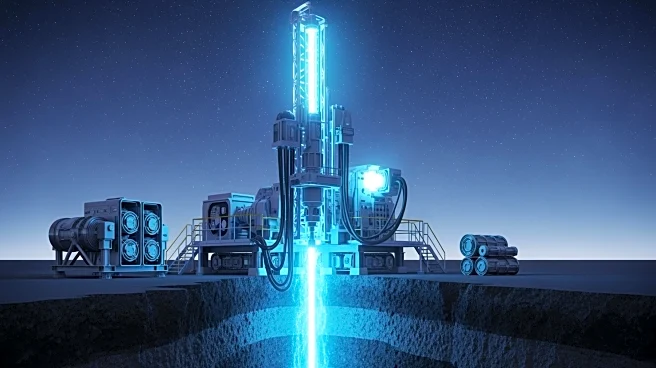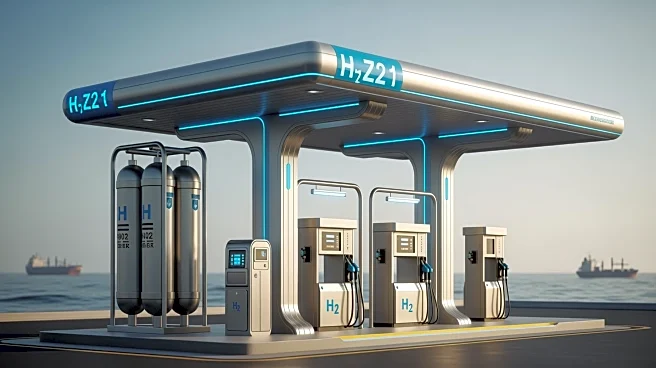What's Happening?
MAX Power Mining Corp has begun drilling its first commercial-scale natural hydrogen well in Saskatchewan, Canada. This initiative marks a significant step in addressing the growing energy demands driven
by artificial intelligence and advanced manufacturing. The company controls 1.3 million acres of land in the Genesis Trend, a geologic corridor extending into Montana and the Dakotas. Natural hydrogen, generated through natural geological processes, offers a clean, emissions-free energy source. MAX Power's efforts are supported by partnerships with the Petroleum Technology Research Centre, aiming to validate the scientific potential of natural hydrogen as a scalable energy solution.
Why It's Important?
The development of natural hydrogen as a clean energy source is crucial in the context of increasing electricity demands from AI data centers and semiconductor manufacturing. As traditional energy sources face challenges such as intermittency and carbon emissions, natural hydrogen presents a promising alternative. Its potential for low-cost production and zero emissions aligns with global decarbonization goals. MAX Power's pioneering efforts could lead to a new era of baseload energy, providing stability and sustainability to power grids strained by technological advancements.
What's Next?
MAX Power's drilling program aims to achieve commercial flow from its wells, potentially establishing natural hydrogen as a viable energy source. Success in this venture could lead to integration with existing natural gas infrastructure, offering blended hydrogen gas revenues. The company's strategic partnerships and leadership changes, including the appointment of Ran Narayanasamy as CEO, indicate a shift towards applied development and commercialization. If successful, this initiative could reshape energy economics for AI, industry, and utilities, positioning MAX Power as a leader in the clean energy sector.
Beyond the Headlines
The exploration of natural hydrogen not only addresses immediate energy needs but also represents a long-term shift towards sustainable energy practices. Its development could reduce reliance on carbon-intensive fuels and support the transition to a low-carbon economy. The collaboration between scientific institutions and industry leaders underscores the importance of integrating academic rigor with practical execution in emerging energy technologies.











